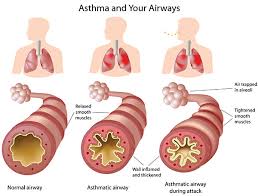DRAWING THE SYMPTOM
This exercise is particularly healing for those who insist “I can’t draw’’ and “I’m a terrible artist.’’ If you hear negative comments regarding your work, remember that’s not you, it’s a member of the Committee, intent on sabotaging your effort. Now spend a few minutes with what you’ve done. Notice how you feel as you look at your work. If there’s anything that you find powerful, surprising, or interesting, take some time out and write about it in your journal. In the next chapter you will continue working with this image to Undo it.
ASTHMA SYMPTOMS — WHAT ELSE ARE THEY TELLING YOU?
By now, you have begun to create a different relationship with asthma symptoms. Instead of just trying to get rid of the symptom, as in conventional Western medicine, you are learning how to Focus on the symptom’s meaning and message. For, until we listen to the message of the symptom, it continues to repeat itself in one form or another. If you hold a belief that physical symptoms have no meaning besides your bodily discomfort, we suggest you suspend this way of thinking. Your Committee will be more than glad to hold onto it for you until you decide you want it back.
When you listen without analyzing or drawing conclusions, symptoms reveal themselves. A symptom may speak to you during an imagery exercise, while writing in your journal, in a dream, or as a spontaneous insight that seems to come out of nowhere. This next section describes how Focusing through breathing, singing, and a unique exercise called the Breathometer (pronounced like barometer or thermometer) can shift your relationship to your symptoms and empower you to live joyfully and breathe freely.
BreathWorks: Singing, Breathing, and Healing
How often do you fully release your breath? When, if ever, do you sing out with joy and let go of sadness and pent-up emotions? How important is the relationship of letting go to breathing? And what can singing offer in the process of channeling both breath and emotion?
On a video produced by the Carl Stough Institute of Breathing Coordination,Lauren Flanigan, an operatic soprano and an asthmatic, describes her symptoms as claustrophobic. Claustrophobia involves a fear of being closed in, confined in a narrow space. It is the phobic concomitant of an asthma symptom. In Flanigan’s case, her claustrophobic symptoms mirrored the torment of her emotional confinement to grief. Even the music she chose involved sadness, grieving, and loss. Chinese medicine sees grief as an important sign of “internal cold,” which affects both the lungs and the adrenal glands. Grief makes it harder for us to breathe — it’s what we “hold” in our chest or gut.
